
Overview
The water, sewage, and other systems industry encompasses vital infrastructure and services for sourcing, treating, distributing, and disposing of water, sewage, and wastewater. This sector includes water supply systems that ensure safe drinking water, wastewater systems for collecting and treating sewage, stormwater management to prevent flooding, water conservation efforts, infrastructure maintenance and upgrades, regulatory compliance for environmental protection, and ongoing research and innovation to improve water treatment efficiency and sustainability. This industry is crucial for public health, environmental preservation, and economic development.
GAO’s RFID, BLE, IoT, and drone technologies have helped its customers in Water, Sewage and Other systems Industry to improve their work processes, their operations and productivity by better management of their staff, materials and operational equipment such as Water pumps, filtration systems, chemical dosing systems, clarifiers, disinfection equipment, membrane systems, aeration systems, sedimentation tanks, mixers, sewage pumps, screening equipment, grit removal systems, biological treatment systems, sludge thickening equipment, anaerobic digesters, belt presses, stormwater drains, detention basins, permeable pavement systems, oil-water separators, distribution pipes, sewer collection pipes, pumping stations, valves, manholes, SCADA systems, flow meters, excavation equipment, pipe inspection cameras, safety gear, laboratory analyzers.
Ranked as one of the top 10 global RFID suppliers, GAO RFID Inc. is based in New York City, U.S. and Toronto, Canada. GAO offers a comprehensive selection of UHF, HF (including NFC) and LF RFID (radio frequency identification) readers and tags, BLE (Low Energy Bluetooth) gateways and beacons, and various RFID and BLE systems such as people tracking, asset tracking, access control, parking control, fleet management, WIP (work in progress), traceability. Such RFID and BLE products and systems, as well as its IoT and drone technologies, have been successfully deployed for Water, Sewage and Other systems. Its sister company, GAO Tek Inc. https://gaotek.com, is a leading supplier of industrial or commercial testers and analyzers, drones, and network products.
Applications & Benefits of GAO’s RFID, BLE, IoT & Drones for Water, Sewage and Other Systems

To satisfy its customers, GAO’s RFID or RFID Systems for Water, Sewage, and Other Systems are offered in 2 versions. One version is that its software is running on a local server that normally is on our client’s premise, and another version runs in the cloud. The cloud server could be GAO’s cloud server, client’s own cloud server or a cloud server from one of the leading cloud server providers such as Amazon Web Services (AWS), Microsoft Azure, Google Cloud, IBM Cloud (formerly SoftLayer), Oracle Cloud, RedHat, Heroku, Digital Ocean, CloudFlare, Linode and Rackspace. The above illustrates GAO system for sub-industry Water, Sewage, and Other Systems software running on a local server.

The above illustrates GAO system for Water, Sewage, and Other Systems with its software running in cloud.
GAO’s RFID and BLE technologies, consisting of RFID readers, RFID tags, BLE gateways, BLE beacons, software, cloud services and their systems, have the following applications in Water, Sewage, and Other Systems industry:
- Asset Tracking and Management: RFID tags are used to track and manage equipment, tools, and assets in water treatment plants, sewage facilities, and distribution networks. This helps improve maintenance scheduling, prevent loss, and optimize resource allocation.
- Inventory Management: RFID tags enable real-time monitoring of inventory levels for chemicals, spare parts, and supplies required for water treatment and sewage systems. This ensures timely restocking and minimizes disruptions.
- Equipment Maintenance: RFID-enabled sensors can track the usage and condition of equipment, such as pumps and valves, and provide alerts when maintenance or repairs are needed, preventing unexpected breakdowns.
- Wastewater Discharge Monitoring: RFID technology can be integrated into monitoring systems to track and record data related to wastewater discharge, ensuring compliance with regulatory standards and minimizing environmental impact.
- Pipeline Inspection: RFID-equipped inspection tools can be used to assess the condition of water and sewage pipelines, aiding in detecting leaks, corrosion, and blockages.
- Security and Access Control: RFID access cards or badges can manage access to restricted areas within water treatment plants and sewage facilities, enhancing security and safety measures.
- Remote Sensing and Monitoring: RFID sensors can remotely monitor water levels, pressure, and quality in reservoirs, storage tanks, and distribution networks, providing real-time data for decision-making.
- Hydrant and Valve Monitoring: RFID tags on hydrants and valves facilitate quick identification and status tracking, simplifying maintenance and emergency response activities.
- Customer Billing and Meter Reading: RFID-enabled smart meters can transmit usage data wirelessly, allowing for more accurate and efficient billing processes and reducing the need for manual meter reading.
- Workforce Management: RFID badges worn by employees can track their movements, ensuring proper workflow coordination and efficient allocation of personnel during maintenance and repairs.
- Environmental Monitoring: RFID sensors can be deployed in sensitive environmental areas to monitor water quality, temperature, and other factors, helping to assess the impact of water and sewage systems on ecosystems.
- Emergency Response: RFID tags on emergency equipment and supplies help responders quickly locate and access resources during critical situations like water main breaks or sewage overflows.
- Mobile Asset Tracking: RFID technology integrated with mobile devices allows field technicians to locate and manage assets in real time, streamlining maintenance tasks and reducing downtime.
- Regulatory Compliance: RFID tags can be used to track the movement and treatment of hazardous materials, ensuring compliance with regulations and minimizing risks.
GAO’s drone technologies find the following applications in the Water, Sewage, and Other Systems industry:
- Infrastructure Inspection: Drones are used to visually inspect water treatment plants, sewage facilities, pipelines, reservoirs, and other infrastructure to identify leaks, corrosion, structural damage, and maintenance needs without the need for manual inspections.
- Pipeline Monitoring: Drones equipped with specialized cameras and sensors can fly along pipelines to detect anomalies, identify leaks, and assess the condition of pipelines, helping to prevent water loss and environmental contamination.
- Sewage System Inspection: Drones can navigate through sewage systems to inspect and assess the condition of tunnels, pipes, and manholes, enabling efficient maintenance planning and reducing the need for human entry into hazardous environments.
- Water Quality Assessment: Drones equipped with water-sampling equipment and sensors can collect water samples from lakes, rivers, and reservoirs, providing data on water quality parameters such as temperature, pH, and nutrient levels.
- Aerial Mapping and Surveying: Drones can create high-resolution aerial maps and 3D models of water bodies, sewage facilities, and other landscapes, aiding in urban planning, land use assessment, and environmental monitoring.
- Flood Monitoring and Prediction: Drones can be deployed to monitor water levels during heavy rainfall and floods, providing real-time data for flood prediction, emergency response, and disaster management.
- Environmental Monitoring: Drones are used to monitor the impact of water and sewage systems on the surrounding environment, including vegetation health, aquatic ecosystems, and pollution levels.
- Emergency Response: Drones assist in rapid assessment of disaster-affected areas, allowing emergency responders to identify critical infrastructure damage, prioritize response efforts, and plan rescue operations.
- Geographic Information Systems (GIS) Mapping: Drones capture geospatial data that can be integrated into GIS systems, facilitating accurate mapping of water distribution networks, sewage systems, and related infrastructure.
- Algae Bloom Detection: Drones equipped with multispectral cameras can detect harmful algae blooms in bodies of water, providing early warning for water treatment plant operators to take preventive measures.
- Thermal Imaging: Drones with thermal cameras can detect temperature variations in water bodies, helping to identify thermal pollution sources and track heat distribution.
- Inspection of Inaccessible Areas: Drones can access hard-to-reach or hazardous areas, such as confined spaces within sewage systems or elevated water tanks, for inspection and monitoring purposes.
- Construction Progress Monitoring: Drones provide aerial imagery and videos to monitor the progress of construction projects related to water and sewage infrastructure, ensuring compliance with design specifications.
- Search and Rescue: Drones equipped with cameras and thermal imaging sensors assist search and rescue teams in locating individuals who may be lost or stranded in water-related emergencies.
GAO’s IoT technologies, consisting of IoT sensors, sensors networks and systems, find the following applications in the Water, Sewage, and Other Systems industry:
- Smart Metering: IoT-enabled smart meters monitor water consumption in real time, enabling accurate billing, leak detection, and water conservation efforts.
- Remote Monitoring of Infrastructure: IoT sensors collect data from water treatment plants, sewage systems, and distribution networks to monitor equipment status, water quality, and flow rates.
- Predictive Maintenance: IoT sensors track the performance of pumps, valves, and other equipment, predicting maintenance needs and reducing downtime through timely repairs.
- Leak Detection: IoT sensors identify leaks in water distribution systems and sewage pipelines, minimizing water loss and preventing environmental contamination.
- Water Quality Monitoring: IoT devices measure parameters like pH, turbidity, dissolved oxygen, and contaminants, ensuring compliance with water quality standards.
- Flood Detection and Monitoring: IoT sensors detect rising water levels and trigger alerts for flood prediction and disaster management.
- Asset Tracking: IoT-enabled tags track the location and movement of equipment, tools, and assets, optimizing inventory management and preventing loss.
- Environmental Sensing: IoT sensors monitor environmental factors like temperature, humidity, and air quality, aiding in pollution detection and ecosystem preservation.
- Energy Optimization: IoT systems analyze data to optimize energy usage in water treatment processes, reducing operational costs and carbon footprint.
- Real-Time Analytics: IoT platforms process data to provide actionable insights, enabling informed decision-making for efficient resource allocation and system management.
- Smart Irrigation: IoT sensors in agricultural areas adjust irrigation based on weather forecasts and soil moisture levels, conserving water and improving crop yields.
- SCADA Integration: IoT devices integrate with SCADA systems for remote monitoring and control of water and sewage infrastructure, enhancing operational efficiency.
- Customer Engagement: IoT-enabled apps and portals provide consumers with real-time insights into their water usage, encouraging conservation.
- Water Source Management: IoT solutions monitor water levels in reservoirs, lakes, and rivers, facilitating efficient water sourcing and allocation.
- Emergency Response: IoT-enabled systems detect anomalies and trigger alerts in case of equipment failures, leaks, or contamination events.
- Wastewater Treatment Optimization: IoT systems optimize biological treatment processes by analyzing data and adjusting parameters for optimal performance.
- Regulatory Compliance: IoT devices provide continuous data streams for regulatory reporting and ensure adherence to water quality and environmental standards.
- Demand Forecasting: IoT analytics predict water demand patterns, helping utilities plan for peak usage and infrastructure expansion.
- Smart Stormwater Management: IoT sensors manage stormwater systems, preventing flooding by monitoring flow rates and controlling drainage infrastructure.
- Public Health Protection: IoT-enabled water quality monitoring ensures safe drinking water and reduces the risk of waterborne diseases.
GAO Helps Customers Comply with Standards, Mandates & Regulations of Water, Sewage, and Other Systems
GAO RFID Inc. has helped many companies in Water, Sewage, and Other Systems to deploy RFID, BLE, IoT and drone systems and to ensure such deployments complying with the applicable industry standards, mandates and government regulations:
RFID, BLE, IoT, & Drone Standards & Mandates
- ISO 18000 Series (RFID air interface standards)
- ISO 15693 (HF RFID standard)
- ISO 14443 (NFC standard)
- ASTM E2567 (RFID for tracking and tracing of materials)
- EPA Clean Water Act (monitoring and reporting requirements)
- WERCSmart (RFID labeling for hazardous materials)
- IEEE 802.15.4 (Low-rate wireless personal area networks)
- MQTT (Message Queuing Telemetry Transport)
- CoAP (Constrained Application Protocol)
- OneM2M (IoT standardization for M2M communications)
- NIST Cybersecurity Framework (cybersecurity guidelines for IoT systems)
- EU General Data Protection Regulation (GDPR) (data protection for IoT devices)
- Bluetooth SIG (Bluetooth technology standards)
- Bluetooth GATT (Generic Attribute Profile)
- Eddystone (BLE beacon format by Google)
- iBeacon (Apple’s BLE-based proximity sensing standard)
- FIPS 140-2 (Security requirements for cryptographic modules)
- FCC Part 15 (Regulations for wireless devices)
- ASTM F38 (Unmanned Aircraft Systems standards)
- ISO 21384 (UAS Identification and Registration)
- FAA Part 107 (Commercial drone regulations)
- European Union Aviation Safety Agency (EASA) regulations
- Remote ID Rule (U.S. regulation for drone identification)
- JARUS (Joint Authorities for Rulemaking on Unmanned Systems)
US. Government Regulations
- Clean Water Act (CWA)
- Safe Drinking Water Act (SDWA)
- Resource Conservation and Recovery Act (RCRA)
- National Pollutant Discharge Elimination System (NPDES)
- Comprehensive Environmental Response, Compensation, and Liability Act (CERCLA)
- Emergency Planning and Community Right-to-Know Act (EPCRA)
- Clean Air Act (CAA)
- Oil Pollution Act of 1990 (OPA)
- Federal Water Pollution Control Act (FWPCA)
- Endangered Species Act (ESA)
- National Environmental Policy Act (NEPA)
- Water Infrastructure Finance and Innovation Act (WIFIA)
- Safe Drinking Water State Revolving Fund (SDWSRF)
- Wastewater Infrastructure Funding and Financing (WIFF) Act
- Stormwater Phase II Rule
- WaterSense Program
- Water Quality Standards (40 CFR Part 131)
- Underground Injection Control (40 CFR Part 144)
- Pretreatment Program (40 CFR Part 403)
- Groundwater Protection Strategy (40 CFR Part 144)
Canadian Government Regulations
- Canadian Environmental Protection Act, 1999 (CEPA)
- Fisheries Act
- Safe Drinking Water for First Nations Act
- Wastewater Systems Effluent Regulations
- Guidelines for Canadian Drinking Water Quality
- Canada Water Act
- Canadian Guidelines for Recreational Water Quality
- National Energy Board Act (for pipelines)
- National Plumbing Code of Canada
- Canada Labour Code (Part II) – Occupational Health and Safety
- Transport Canada Drone Regulations (for UAVs)
- Canadian Environmental Assessment Act, 2012
GAO Software Provides Easy Integration with API
GAO’s RFID and BLE software offers a free trial for both the server-based and cloud versions, and offers an API to the important systems in Water, Sewage, and Other Systems such as:
Personnel Management:
- Employee Scheduling and Shift Management
- Training and Certification Tracking
- Performance Evaluation and Appraisal Systems
- Health and Safety Compliance Monitoring
- Workforce Optimization and Task Allocation
Equipment Management:
- Preventive and Predictive Maintenance
- Equipment Tracking and Inventory Management
- Asset Life Cycle Management
- Condition Monitoring and Fault Detection
- Calibration and Certification Tracking
Access Control:
- Facility Access Management for Employees and Contractors
- Restricted Area Monitoring and Control
- Visitor Management and Security Clearance
- Biometric Authentication for Personnel Identification
- Incident Reporting and Alarm Systems Integration
Warehouse Management:
- Inventory Tracking and Management for Spare Parts
- Material Replenishment and Demand Forecasting
- RFID-enabled Asset Location and Retrieval
- Barcode Scanning for Item Identification
- Order Fulfillment and Just-in-Time Inventory
Supply Chain Management:
- Supplier Relationship Management
- Procurement and Purchase Order Tracking
- Supplier Quality Assurance and Auditing
- Demand Planning and Inventory Optimization
- Supplier Performance Metrics and KPIs
Other Applications:
- Regulatory Compliance Tracking and Reporting
- Environmental Impact Assessment and Reporting
- Data Analytics for Operational Efficiency
- Real-time Monitoring and Remote Control
- Energy Management and Optimization
GAO has enabled its customers to make use of some of the leading software and cloud services in Basic Chemical Manufacturing industry. Below are some of popular software and cloud services in Water, Sewage, and Other Systems.
Commercial Application Software: AVEVA ProWater™, Innovyze InfoWater, WaterGEMS by Bentley Systems, Wastewater Modeling and Simulation (WMS), SCADA systems (e.g., Wonderware, Ignition), EPA SWMM (Storm Water Management Model), IBM Maximo for Asset Management, InfoWorks WS by Innovyze, Hach Water Information Management Solution (Hach WIMS), Cityworks for Asset Management. Cloud Services: Amazon Web Services (AWS), Microsoft Azure, Google Cloud Platform, IBM Cloud, Oracle Cloud, AVEVA Connect, Schneider Electric EcoStruxure™ Asset Advisor, Xylem’s Visenti Cloud Services, OSIsoft PI Cloud Connect, Aquasuite by Royal HaskoningDHV. Personnel Management: ADP Workforce Now, Kronos Workforce Ready, SAP SuccessFactors, BambooHR, Paycor, UKG Pro (Ultimate Kronos Group), Zenefits, Gusto, Workday Human Capital Management, Paycom. Equipment Management: IBM Maximo, Infor EAM, Fiix CMMS, UpKeep, eMaint CMMS, Dude Solutions MaintenanceEdge, Maintenance Connection, Asset Panda, MPulse CMMS, Limble CMMS. Access Control: Honeywell Pro-Watch, Genetec Security Center, AMAG Technology Symmetry, LenelS2 OnGuard, Paxton Net2. Warehouse Management: Manhattan Associates Warehouse Management System (WMS), SAP Extended Warehouse Management (EWM), JDA Warehouse Management, Blue Yonder WMS, Oracle Warehouse Management Cloud. Supply Chain Management: SAP Integrated Business Planning (IBP), Oracle Supply Chain Management Cloud, Blue Yonder (formerly JDA) Supply Chain Planning, Kinaxis RapidResponse, Logility Supply Chain Planning.
GAO has worked with some of the leading technology companies in Water, Sewage, and Other Systems in to provide integrated its RFID, BLE, IoT and drone solutions to customers.Here are some of the technology leaders in sub-industry Water, Sewage, and Other Systems.
Information Technology Companies: AVEVA Group plc, Innovyze, Bentley Systems, OSIsoft (now part of AVEVA), Hexagon AB (Intergraph), Trimble Inc., Schneider Electric, Honeywell, Siemens AG, IBM Corporation. Electronic Technology Companies: Xylem Inc., Hach (part of Danaher Corporation), Thermo Fisher Scientific Inc., Endress+Hauser Group, Yokogawa Electric Corporation, ABB Group, Emerson Electric Co., Krohne Group, SUEZ Water Technologies & Solutions, Veolia Water Technologies, System Technology Companies: Siemens AG, Schneider Electric, ABB Group, Honeywell, Rockwell Automation, Inc., General Electric (GE), Johnson Controls, Emerson Electric Co., Danfoss Group, Phoenix Contact.
Case Studies of RFID, IoT & Drone Applications
Case Studies of RFID Applications
Below are some RFID application cases in Water, Sewage, and Other Systems industry.
RFID technology has been applied to water management in the USA, as seen in the Santa Clara Valley Water District’s utilization of RFID-enabled sensors for remote monitoring of water quality and levels, aiding in efficient resource allocation. Additionally, the City of Tampa, Florida, employed RFID for their wastewater system, improving maintenance with real-time tracking of equipment and reducing downtime. In access control, the East Bay Municipal Utility District in California implemented RFID for secure facility access, enhancing employee safety. These cases demonstrate RFID’s diverse applications in optimizing water-related operations and infrastructure management.
Ultra-High Frequency (UHF) RFID technology has been explored for various applications in the water, sewage, and other systems industry in the USA. These applications encompass asset tracking and management, inventory control, maintenance optimization, and personnel access management. UHF RFID tags have been considered for monitoring equipment and infrastructure conditions, enhancing preventive maintenance, and streamlining operational processes across water treatment plants, sewage facilities, and distribution networks
Using RFID tags to monitor the maintenance schedule and condition of sewage pumps and valves, optimizing preventive maintenance routines and minimizing downtime. Smart Metering and Consumption Monitoring: Implementing RFID-enabled smart meters for accurate and automated water consumption tracking, enhancing billing accuracy and promoting water conservation. Asset Tracking in Water Treatment Plants: Applying RFID technology to track the movement and location of chemicals, tools, and equipment within water treatment facilities, streamlining inventory management and improving operational efficiency. Leakage Detection in Water Distribution Systems: Utilizing RFID-based sensors to detect leaks in water distribution pipelines, enabling swift identification and repair to reduce water losses and minimize environmental impact. Access Control and Security: Deploying RFID-enabled access control systems in water reservoirs and treatment facilities to enhance security, prevent unauthorized access, and ensure regulatory compliance. While these scenarios illustrate potential RFID applications in the Canadian water and sewage sector, specific case studies would depend on actual implementations and data from relevant projects.
Several RFID applications in water, sewage, and other systems have been implemented in Europe. These include the use of RFID technology for automated water meter reading and leakage detection in Paris, France; RFID-based asset tracking and maintenance optimization in water treatment plants in Barcelona, Spain; RFID-enabled wastewater management and remote monitoring in Copenhagen, Denmark; RFID-tagged waste bins for efficient collection and disposal in Rotterdam, Netherlands; and RFID-equipped sensors for real-time water quality monitoring and environmental assessment along rivers in Germany.
Many applications of RFID by GAO can be found here;
Case Studies of IoT Applications
Below are some IoT application cases in Water, Sewage, and Other Systems.
Numerous IoT applications have been implemented in water, sewage, and other systems across the USA. These include the deployment of IoT sensors for real-time water quality monitoring and contamination detection in the Great Lakes region; IoT-enabled smart meters and leak detection systems in water distribution networks in Los Angeles, California; IoT-based flood monitoring and prediction systems in Houston, Texas; remote monitoring of sewage treatment plants and asset management using IoT technology in New York City; and the integration of IoT devices with SCADA systems for improved water resource management and efficient distribution in Phoenix, Arizona.
In Canada, various IoT applications have been implemented in water, sewage, and other systems. These include IoT-enabled smart water meters and leak detection systems deployed by utilities in cities like Toronto and Vancouver; the use of IoT sensors for real-time water quality monitoring and pollution detection in lakes and rivers across Ontario; IoT-based remote monitoring of sewage treatment plants and equipment maintenance optimization in Montreal; the integration of IoT devices with SCADA systems for efficient control of water distribution networks in Calgary; and the deployment of IoT platforms to enhance stormwater management and flood prediction in cities like Edmonton and Ottawa.
In Mexico, several IoT applications have been implemented in water, sewage, and other systems. Notable case studies include the use of IoT sensors for real-time water quality monitoring and contamination detection in Mexico City’s water distribution network; IoT-enabled smart irrigation systems in agricultural regions to optimize water usage and crop yield; IoT-based flood monitoring and early warning systems along coastal areas to mitigate flood risks; IoT-connected sewage treatment plants in urban areas for remote monitoring and efficient operation; and IoT-enabled leak detection systems in industrial settings to prevent water wastage and maintain environmental compliance.
Numerous IoT applications have been implemented in water, sewage, and other systems across Europe. These include IoT-based smart water metering and leakage detection in London, UK; an IoT-driven real-time water quality monitoring system in Stockholm, Sweden; an IoT-enabled stormwater management platform in Amsterdam, Netherlands; IoT sensors for flood prediction and response in Venice, Italy; and an integrated IoT platform for remote monitoring and control of wastewater treatment facilities in Barcelona, Spain.
Case Studies of Drone Applications
Below are some drone application cases in Water, Sewage, and Other Systems.
Several drone applications in water, sewage, and other systems have been implemented in the USA. These include the use of drones for assessing water treatment plant infrastructure and conducting visual inspections of sewage systems in New York City, New York; utilizing drones for water quality monitoring and pollution assessment in the San Francisco Bay Area, California; drones used to monitor water levels and flood conditions in rivers and reservoirs in Houston, Texas; drone-based aerial surveys for infrastructure planning and assessment of wastewater treatment facilities in Los Angeles, California; and drones deployed for emergency response and disaster management during water-related incidents such as hurricanes and flooding events across various states.
Several drone applications in water, sewage, and other systems have been implemented in Canada. These include the use of drones for monitoring water quality and detecting harmful algae blooms in Lake Winnipeg, Manitoba; drone-based inspections of wastewater treatment plants and sewage systems in Toronto, Ontario; aerial surveys for mapping water distribution networks and monitoring dam infrastructure in British Columbia; drones equipped with thermal cameras for detecting leaks and anomalies in pipelines in Alberta; and drone-assisted assessments of flood-affected areas and infrastructure damage in Calgary, Alberta.
Several drone applications in water, sewage, and other systems have been implemented in Mexico. These include the use of drones for aerial inspections and monitoring of wastewater treatment plants in Mexico City, drone-based assessments of river water quality and pollution levels in Monterrey, drones for identifying and mapping water leaks in water distribution networks in Guadalajara, and the utilization of drones for surveying and mapping of sewage infrastructure in Tijuana, contributing to improved operational efficiency and environmental management.
Drone applications in water, sewage, and other systems have been successfully implemented in Europe. These include drone-based aerial inspections of water treatment facilities and sewage infrastructure in London, UK; the use of drones for monitoring water quality and detecting pollution in lakes and rivers in Switzerland; drone surveys for flood mapping and analysis of sewage network conditions in Paris, France; drone-assisted search and rescue operations during flooding in Venice, Italy; and the deployment of drones for monitoring and maintenance of reservoirs and dams in Spain.
GAO RFID Systems & Hardware for Water, Sewage, and Other Systems
GAO RFID Inc. offers the largest selection of BLE gateways, BLE beacons, RFID readers, tags, antenna, printers, and integrated RFID systems for various industries, including Water, Sewage, and Other Systems.
BLE (Bluetooth Low Energy)
GAO offers advanced BLE gateways:
as well as versatile beacons with such important functions as temperature, humility, vibration and panic button:
GAO’s BLE technology is suitable for many industries, including Water, Sewage, and Other Systems.
UHF (Ultra High Frequency) RFID
GAO offers the largest selection of UHF RFID readers for various industries, including Water, Sewage, and Other Systems:
GAO RFID offers the widest choice of UHF RFID tags, labels, badges, wristbands for various industries, including Water, Sewage, and Other Systems:
and an array of antennas to address different applications:
HF (High Frequency), NFC (Near Field Communications) and LF (Low Frequency) RFID
GAO offers the largest selection of HF, NFC, and LF RFID readers for various industries, including Water, Sewage, and Other Systems:
HF, NFC and LF RFID tags, labels, badges, wristbands for various industries, including Water, Sewage, and Other Systems:
and antennas:
GAO also offers RFID printers:
Digital I/O adapters:
and relay controllers:
For embedded applications, GAO offers UHF, HF and LF RFID reader modules:
- UHF 860 – 960 MHz RFID Modules
- 13.56 MHz High Frequency RFID Modules
- 125 kHz Low Frequency RFID Modules
In collaboration with its sister company GAO Tek Inc, a wide selection of high quality drones are offered:
The RFID systems by GAO are highly popular for clients in Water, Sewage, and Other Systems:
Physical asset or operational equipment tracking system:
Assets that can be effectively tracked using GAO’s technologies include cameras, water quality analyzers, chlorination systems, flow meters, aeration equipment, sludge dewatering centrifuges, UV disinfection systems, and acoustic leak detection devices.
People or workers tracking system:
Personnel or people access control system:
Parking or vehicle control system:
Furthermore, GAO provides the customization of RFID tags, RFID readers, BLE beacons and BLE gateways, IoT, drones, and systems and consulting services for Water, Sewage, and Other Systems and for various industries in all metropolitans in North America, particularly the U.S., Canada and Mexico, and Europe:
GAO Makes Efforts to Satisfy Customers
Large Choice of Products
In order to satisfy the diversified needs of their corporate customers, GAO RFID Inc. and its sister company GAO Tek Inc. together offer a wide choice of RFID, BLE, IoT, drones, testing and measurement devices, and network products.
Overnight Delivery
In order to shorten the delivery to our customers, GAO has maintained a large stock of its products and is able to ship overnight within continental U.S. and Canada, and fast delivery to anywhere in Mexico and Europe from the nearest warehouse.
Local to Our Customers
We are located in both the U.S. and Canada. We travel to customers’ premises if necessary. Hence, we provide a very strong local support to our customers in North America, particularly the U.S., Canada and Mexico, and Europe. Furthermore, we have built partnerships with some integrators, consulting firms and other service providers in different cities to further strengthen our services. Here are some of the service providers in Water, Sewage, and Other Systems we have worked with to serve our joint customers:
- Black & Veatch
- AECOM
- Jacobs
- Burns & McDonnell
- Brown and Caldwell
- CDM Smith
- Carollo Engineers
- Stantec
- Tetra Tech
- HDR, Inc.
- Black & Veatch
- CDM Smith
- Jacobs
- AECOM
- Arcadis
- HDR
- Tetra Tech
- Stantec
- GHD
- CH2M (now part of Jacobs)
- Mott MacDonald
- Carollo Engineers
- Brown and Caldwell
- Hazen and Sawyer
- Woolpert
- CGI Group Inc.
- PCL Construction
- Stantec
- AECOM
- MDA (MacDonald, Dettwiler and Associates)
- Tetra Tech
- SNC-Lavalin
- WSP Canada
- Black & Veatch
- Aquatech
- Siemens Water Technologies
- Schneider Electric
- ABB Water Solutions
- Veolia Water Technologies
- SUEZ Water Technologies & Solutions
- AVEVA Group plc
- SICK AG
- Endress+Hauser Group
- Yokogawa Electric Corporation
- IDEX Corporation
GAO Has Served Water, Sewage, and Other Systems Extensively
GAO RFID Inc. and its sister company GAO Tek Inc. together offer a wide choice of RFID, BLE, IoT, drone, testing and measurement devices, and network products.
GAO’s products and technologies have helped its customers in Water, Sewage, and Other Systems Industry to achieve success in Smart Water Management, Digital Twin, IoT Integration, Predictive Maintenance, Water Quality Monitoring, Decentralized Wastewater Treatment, Resilience Planning, Remote Monitoring, Asset Management, Circular Economy, Water Reuse, Green Infrastructure, Smart Metering, Data Analytics, Blockchain for Water, Sustainable Practices, Climate Adaptation, Energy Efficiency, Advanced Treatment Technologies, Smart Sensors.
GAO RFID Inc. has deployed RFID, BLE and IoT projects for many companies in Water, Sewage, and Other Systems, including many in its various divisions such as;
- Water Supply: Involves sourcing, treating, and distributing clean and safe drinking water to consumers.
- Wastewater Management: Focuses on collecting, treating, and disposing of sewage and wastewater to prevent environmental contamination.
- Stormwater Management: Deals with managing rainwater runoff to prevent flooding and protect water bodies.
- Water Treatment: Encompasses various processes to purify water for consumption or industrial use.
- Water Infrastructure: Involves the construction, maintenance, and management of water distribution networks, treatment plants, and storage facilities.
- Sewer Infrastructure: Deals with the design, maintenance, and management of sewer systems and sewage treatment facilities.
- Water Conservation: Focuses on efficient water use, reuse, and minimizing water wastage.
- Environmental Monitoring: Involves tracking the impact of water systems on ecosystems and water quality.
- Regulatory Compliance: Ensures adherence to laws and regulations related to water quality, pollution, and safety.
- Smart Water Solutions: Incorporates technology for real-time monitoring, data analysis, and optimization of water systems.
- Wastewater Reclamation: Involves treating wastewater for reuse in non-potable applications.
- Desalination: Focuses on converting seawater into fresh water through desalination processes.
- Water Resource Management: Deals with managing water availability, allocation, and sustainability.
- Flood Control and Management: Involves strategies to prevent and manage flooding, including floodplain mapping and infrastructure design.
- Water Research and Innovation: Focuses on developing new technologies and practices for efficient water management.
- Water Policy and Governance: Addresses legal and policy frameworks for water management, allocation, and regulation.
GAO’s technologies enable its customers in Water, Sewage, and Other Systems to effectively track their workforces such as plant operators, wastewater technicians, sewer system maintenance workers, pipeline inspectors, environmental engineers, water quality analysts, hydrologists, stormwater managers, meter readers, utility technicians, SCADA operators (Supervisory Control and Data Acquisition), water resource planners, GIS (Geographic Information Systems) specialists, regulatory compliance officers, field technicians, chemists, environmental health specialists, and asset management professionals effectively track operational assets such as water pumps that facilitate water movement, sewage pumps for wastewater transportation, valves to control flow and pressure, clarifiers for solid-liquid separation, aeration systems to introduce oxygen into water for treatment processes, disinfection equipment such as UV systems and chlorinators, sedimentation tanks for particle settling, filters to remove impurities, SCADA systems enabling remote monitoring and control, sensors for real-time data collection, pipelines for water and sewage distribution, manholes for access and maintenance, flow meters for measuring water flow rates, and blowers for providing air in aeration processes.
Here are some of the leading companies in Water, Sewage, and Other Systems industry GAO has served:
- Veolia North America
- American Water
- Mott MacDonald
- Carmagen Engineering
- Greeley and Hansen
- Olsson
- Brown and Caldwell
- Carollo Engineers
- Black & Veatch
- Garney Construction
- H2O Innovation Inc.
- Echologics Engineering Inc.
- Aecon Group Inc.
- R.J. Burnside & Associates Limited
- Clean Harbors Canada Inc.
- Schneider Electric México
- Aquatech México
- Hidrosistemas de México
- IDS Water México
- Grundfos
- Danfoss
- Aqualia
- Acciona Agua
- Thames Water
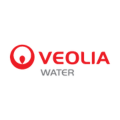

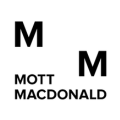


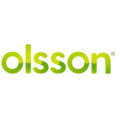
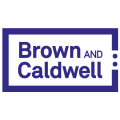
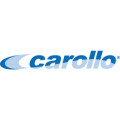
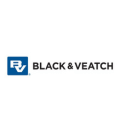


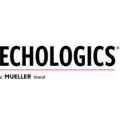


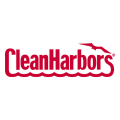
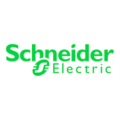
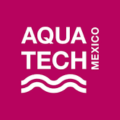
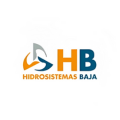
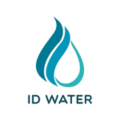
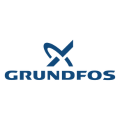
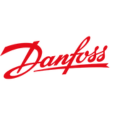
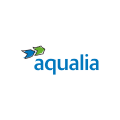
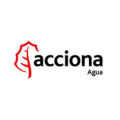
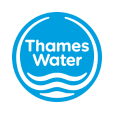
You Are Invited to Contact Us!
If you are interested in our products, services or partnering with us, please feel free to contact us by filling out this form:
or email us at sales@gaorfid.com
